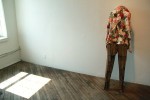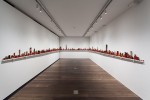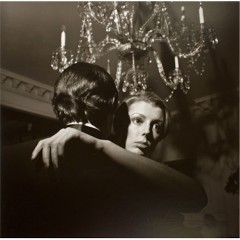The secrets we keep from ourselves, from each other, are the subject of a terrific show at FLUXspace. At a time when the national conversation is focused on the secrets of CIA torture memos from the last administration, this show seems to reverberate beyond its specific focus on the personal secrets we all hold.
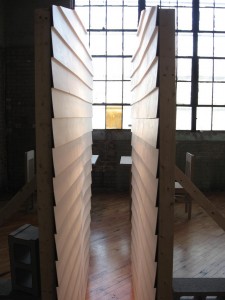
Taking Measures, features work by Delawarean Chad States, and two Vox Populi members, Leah Bailis and Anna Neighbor, each of the three channeling a different aspect of secretiveness.
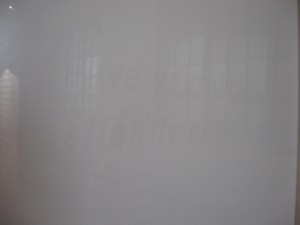
Chad States’ conceptual take on the internet, on chat rooms, on illicit sex and on the nature of language is pitch perfect. He has created seven archival pigment prints of white on white lettering. The words, difficult to read, are the sorts of language that no one would ever record as quotable:
Walk Into The Woods, Follow the Path near the Pond
Use Your Instincts
Go Down the Road a Mile Or So, There Is a Parking Lot on the Right
The words come off an internet homosexual chat room, said FLUXspace’s Nike Desis, when I speculated about the source.

This is the best piece of ultra-conceptual art that I’ve seen in a long time. It gives the flavor of hiding, of the anonymity of the chat room and of the barely visible quality of any sexual encounter that society doesn’t sanction. And the sheer ordinariness of the language is a nice reminder of the sheer ordinariness–and seediness–of these sorts of encounters, mostly devoid of romance but intense in desire and danger.
The anonymity here is a very different take on dirty from the pole dance pictures of Philip-Lorca diCorcia. What’s with society that women doing sexual acts with poles can reveal themselves to whomever, with their noms de pole attached? They are items of display, not in the least furtive. The only nods there to sneakiness is the dark room and the pseudonyms. That hardly qualifies as anonymity and invisibility!
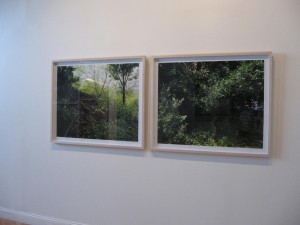
In a nice pairing with States, Anna Neighbor has photographed “hideouts” in overgrown scrub. Desis said the hideouts are places where people go for sex. Even if you’re not in on that information, the word hideout in the titles allows you to surmise that someone meets there secretly, perhaps some kids playing out of sight of mom and dad. Either way, it has the feel of thrill and danger and secrecy.
The large scale of these archival inkjet prints, 32 x 40 inches, gives the sense of entry into the hollowed out areas in the scrub. Rather than the small-scale, peep-show gropings of Kohei Yoshiyuki‘s infrared photographs of clandestine lovers in a public park that showed at Yossi Milo Gallery in 2007 (such a crowd to see the porno that I could only edge my way in!), Neighbor’s photos offer a poetic openness to multiple interpretations and situations.
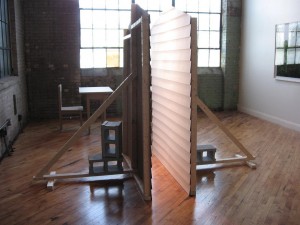
The third piece, Facades, by Bailis, is essentially the narrow alley between two white clapboard or siding walls, a small spot where kids can hide and talk, out of sight of adults. Although the space between is beautifully lit by sunlight, it is still an emotionally dark space. Bailis has also installed another piece, a pair of tables and chairs. They are set up so whoever sits in the chairs cannot see what’s happening in the alley between the walls. The tables are two different sizes–Mama table and Papa table?
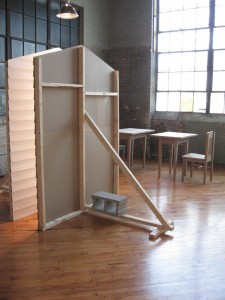
Tables and Chairs is a separate piece from Facades, but the two work together nicely, plus they take the show in another direction, and bring to mind school desks and kitchen tables and ordinary family life– and just how do we measure what is normal, what is acceptable, what is public and what is secret?
The exhibit is the first that FLUX’s new Art Advisory Council–Mark Shetabi, Tim Belknap, Winifred Lutz, Tom Zummer, Stamatina Gregory and Peter Krashes (the lone New Yorker)–selected from about 30 proposals FLUXspace received in answer to a call. More exhibits to come from this process!!!


